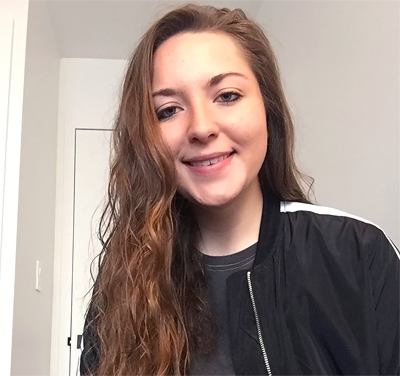On the hunt for sponsorships but unsure about how to entice your desired companies? One tool you can use is a media kit (or press kit). A media kit is a document – almost like a brochure – that provides basic information about your radio station (often in pdf format). Besides sponsors, they can be shared with journalists, potential guests...really anyone you're trying to convince to work with you. Not to mention, you can add your media kit to your website, so then companies and others can even reach out to you!
Creating a media kit does take quite a bit of time and energy, but there are certain steps you can take to make your media kit really shine. Good media kits are all about presentation, information, and persuasion. In this guide, we'll go over all three of those points in-depth with some helpful tips along the way. Without further ado, here's how to make an awesome media kit for your station!
Presentation
Since media kits are a very visual medium, they need to look attractive in order to sell to your sponsor. It's all about the aesthetics with this tool!
First, you're going to need some graphic design software in order to help create your kit. You can certainly get started with something like Google Docs or Slides and build most of your kit using just Google's tools. But, you'll want some graphic design software to help elevate your visuals. If you're not a Photoshop wizard, Canva is a great option. It even has some templates specifically made for media kits, among other features. Besides Canva, some other graphic design tools include Visme, Adobe Express, Design Wizard, and Easil.
If you're uncomfortable designing the media kit yourself, you can always hire a graphic designer to help you out. If you don't know any good graphic designers, we recommend using Fiverr or Upwork to help you find one.
When it comes to making your press kit pop, we feel there are certain elements you should be sure to include (ideally in line with your radio station brand style guide)...
Colors - Nobody enjoys reading from a boring black and white sheet. Add some color to your press kit! If your radio station has a logo or specific colors that match its branding, you should use those specific hues in your kit.
Legibility - Make sure the different sections on your press kit flow together nicely and are easy to read. With text, make sure to include proper grammar and punctuation.
Titles and Text - Not only should the layout of your press kit look appealing, but so should the titles and text you include! For titles, make sure they are easy to spot on the page. You can even give them a cool, funky font if you desire! As for text, you don't need to go too wild with the font (it needs to be legible, after all), but make sure it's not too small or large. Additionally, the color of your text also matters. Make sure it's visible on the page and doesn't sink into the color of the background.
Pictures - As they say, pictures are worth a thousand words! You can include your radio station's logo, headshots of you and your team, or pictures of your studio. You can even include stock photos related to radio or music if it helps get your point across. The more, the better!
Charts - We'll touch upon including data within your media kit in a second. For now, just know that charts are a helpful visual way to show information to your readers. Including them in certain sections of your press kit will help make the information more digestible.
Information
Good visuals will get your sponsors' curiosity, but including useful information in your media kit is the thing that will grab their attention. There are some key elements you need to include in order to fill your sponsor in on everything your station has to offer. They include...
Station History and Description - Start your media kit off with a quick bio about your radio station, its programming, and how it's different from other stations on the market.
Key Stats - At the top, you should highlight your best stats – things like how many listeners you get on a monthly basis (or TLH), how many social media followers your station has, how many years your station has been around, and anything else you feel is important enough to share. If you're especially proud of something your station has achieved, it's probably useful enough to be a key stat on your media kit.
Demographics - Listener demographics are worth noting to a potential sponsor, as it might entice them to work with you if they feel your demographics are the same, or if they are trying to appeal to a certain demographic you have that they don't. Some example demographic info to share includes music genres and topics that appeal most to your listeners, the age range of your audience, known geographic information, and how your listeners primarily find your station (social media, directories, word of mouth, etc.)
Metrics - In addition to key stats, you can include other metrics that help paint a bigger picture: how many listeners you get every day, average listening time, social media followers per channel, newsletter subscribers, and other stats that can be important for advertisers.
Channels You Use for Marketing - If you use social media or other platforms to promote your station, you need to mention those on your media kit. Things like your website, Facebook, Twitter, Instagram, YouTube, livestream, and email marketing are all promotional channels to mention if you use them. Make sure to include clickable links where possible.
Highlights - Again, the stuff that you're proud of or think is an achievement should go in your press kit. Any popular shows or events on your station that attract a lot of listeners? Any standout presenters you have that get a good amount of attention? Mention them.
Bios and Headshots - Any and all key staff members of your station – even if it's just you – should be presented with a bio and headshot in your press kit. Doing so will make your kit feel more human in nature, and will give that extra bit of relatability sponsors will feel drawn to.
Links - Any important links – like your station link, social links, or links to noteworthy press – should be included if possible. Make it easy for your prospective sponsor to do more research on your station.
Testimonials - If a previous sponsor, listener, important artist or guest, or anyone noteworthy is willing to give a testimonial about your station for your media kit, let them do so and include it! Quotes are great convincers. People are more willing to check out something if others recommend it, right?
Sponsor Benefits - Last but not least, mention any benefits your sponsor will receive from supporting you. Think: why should a brand form a collaboration with your station? What are the reasons that make it truly worth their time? For example, if your show has a huge following, mention how many people would be hearing your sponsor's ad if they were to support your next broadcast. If your station is reaching a local or global audience, include info about that. Or even if your station is a non-profit, add in that their support can be tax deductible, etc.
Persuasion
Piggybacking off that last sponsor benefits point, you need to do as much persuading to sponsors as you can in your press kit. Besides including the benefits of becoming a sponsor, we recommend listing some sponsorship options your prospective sponsor can choose from if they are interested. It shows companies that if they support you, you have a plan to make your business relationship work.
Common sponsorship options typically include on-air ads, sponsored shows, infomercials, banner or logo placements, sponsoring an event, social media shoutouts, and newsletter mentions. In your media kit, include which – if any – of these options you'd be comfortable doing with your sponsor. Include what each of these sponsorship options would cost, and how long each promotion plan would last. You've got to make things easy for your customer in order for them to put their money in your lap, and presenting sponsorship plans saves both of you time!
Those are all the tips about media kits we can offer you today. We hope your media kit turns out fabulous, and happy broadcasting!
READ NEXT: How to Write a Press Release for Your Radio Station
Ready to start your own station? Contact one of our Product Consultants or visit our website today.
Discover thousands of free stations from every genre of music and talk at Live365.com. Keep up with the latest news by following us on Facebook (Live365 (Official) and Live365 Broadcasting) and Twitter (@Live365 and @Broadcast365)!
Article Image: A woman looks down at a laptop while sitting on the floor. (Wavebreakmedia via DepositPhotos.)


